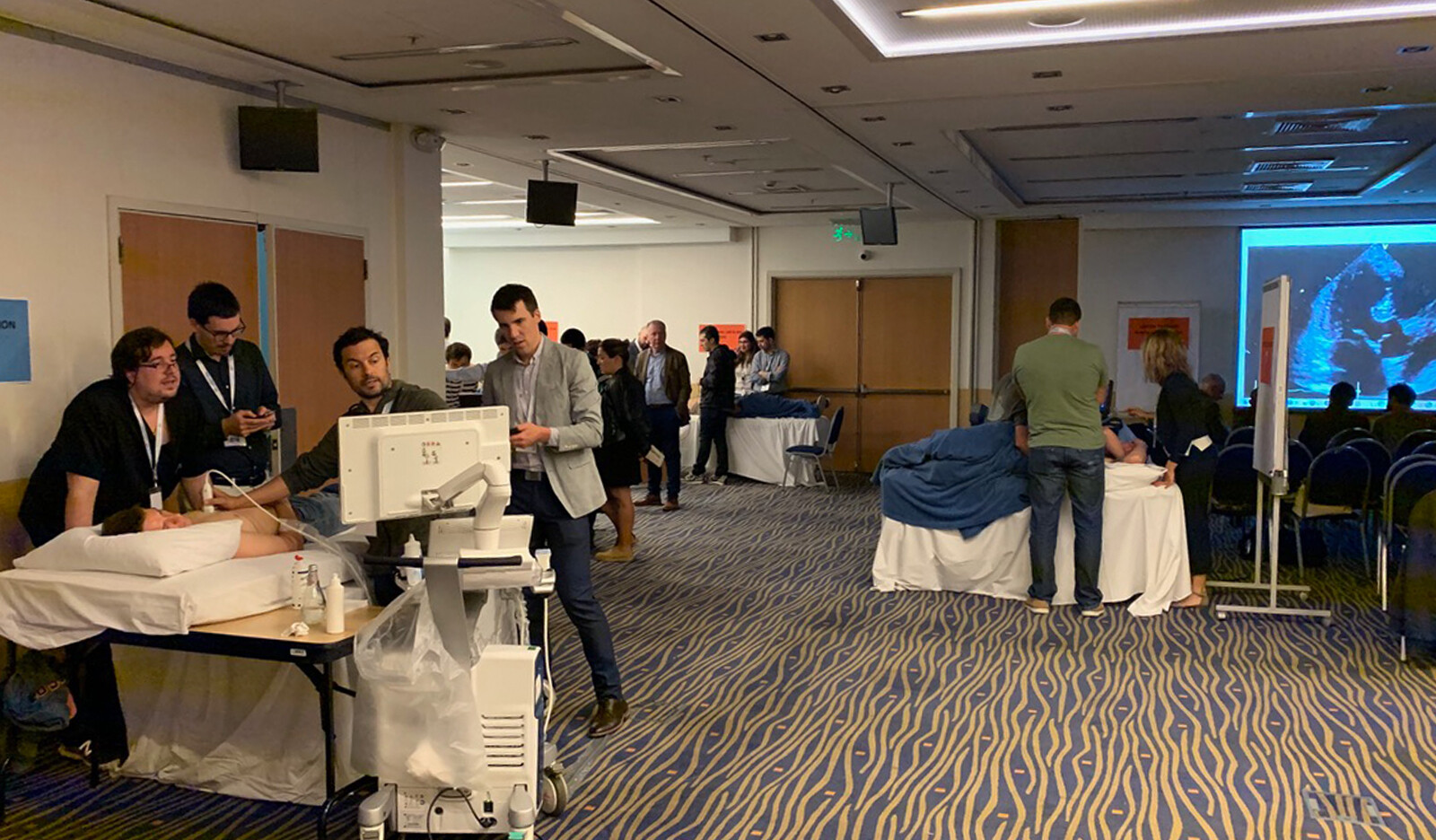SHORT COMMUNICATION • Design and Comparison of a Hybrid to a Traditional In-Person Point-of-Care Ultrasound Course
Source: The Ultrasound Journal 2022;14:12
BACKGROUND
Point-of-care ultrasound (POCUS) reduces procedural complications, improves diagnostic accuracy, and increases provider and patient satisfaction. In addition, the availability of less expensive ultrasound devices and the increasing accessibility of training programs have facilitated the growth of POCUS to medical students, residents in internal medicine and family practice, as well as to Advanced Practice Providers (APPs).
Attendance at a local or national POCUS training program, followed by a longitudinal study phase with hands-on instruction is recommended for POCUS training. However, traditional introductory POCUS courses are resource intensive, typically requiring 3 days at a remote site, consisting of lectures and hands-on components. These barriers are particularly limiting in low-and middle-income countries (LIMC), where there may exist a paucity of on-site POCUS experts, equipment, and high-speed internet access.
The purpose of this study was to evaluate the outcomes of a one-year hybrid POCUS course as compared to a traditional course.
METHODS
Setting and participants
Potential participants were identified through recommendation by division leadership across four NYU Grossman School of Medicine academic hospitals, targeting outpatient and inpatient physicians, and inpatient APPs. Additional participants were identified through self-referral from faculty in other divisions, from faculty in other departments, from fellows in Medicine specialties, and from APPs not initially identified.
Program description
The traditional course started with a 1-month self-study period, where participants were referred to relevant chapters from a POCUS textbook, selected articles, and online videos. Then, the students undertook a 2-day in-person introductory course, which was modeled on the American College of Chest Physicians Critical Care Ultrasound course.
Systems covered in the course included cardiac (five standard views), lungs/pleura, abdomen (kidneys, bladder and aorta) and leg vasculature. To adapt for COVID-19, a course structure was developed that included four modules based on the above organ systems, each consisting of a recorded lecture, an online quiz, an interactive online image interpretation session, and an in-person hands-on session, all followed by two 1-h case discussions held online.
Program evaluation
POCUS skills were evaluated using a hands-on test with human models and proctored by course faculty. Knowledge of POCUS principles, image acquisition, and clinical integration was assessed using a 26-item online test. Participant confidence in image acquisition and clinical integration was assessed using a retrospective pre–post-survey. Participants completed a questionnaire regarding overall satisfaction with the program and individual elements.
RESULTS
24 participants completing at least 3 of the 4 modules were invited for final assessments approximately 8 months after beginning the course, with 83% (20/24) completing the knowledge test and confidence survey, and 79% (19/24) completing the hands-on test.
Comparison of the final assessments between the hybrid (8 months after beginning the course) and traditional cohorts (12 months after beginning course) were performed.
Participant knowledge results showed no significant difference between traditional and hybrid groups (81% and 84% correct, respectively, P = 0.9). There was no difference in POCUS skills as measured by the hands-on test from both groups at end-of-course (76% for both, P = 0.93). Confidence ratings were not statistically different from 2.73 traditional to 3.0 hybrid (out of possible 4, P = 0.46).
Participants rated the course highly, with an average overall rating of 4.6 out 5. In free text comments and in feedback provided during focus groups, participants reported liking having access to uploaded lectures that could be rewatched as often as needed and felt the online sessions were valuable. Participants would have liked to have more hands-on teaching.
CONCLUSIONS
The authors concluded that the success of this hybrid POCUS program of elements of uploaded lectures, online quizzes, and online image interpretation sessions delivered in a modular format supports ongoing adaptation of these types of instructional design into future courses. They did comment on the need to emphasize hands-on supervised practice.
 English
English
 Español
Español 

